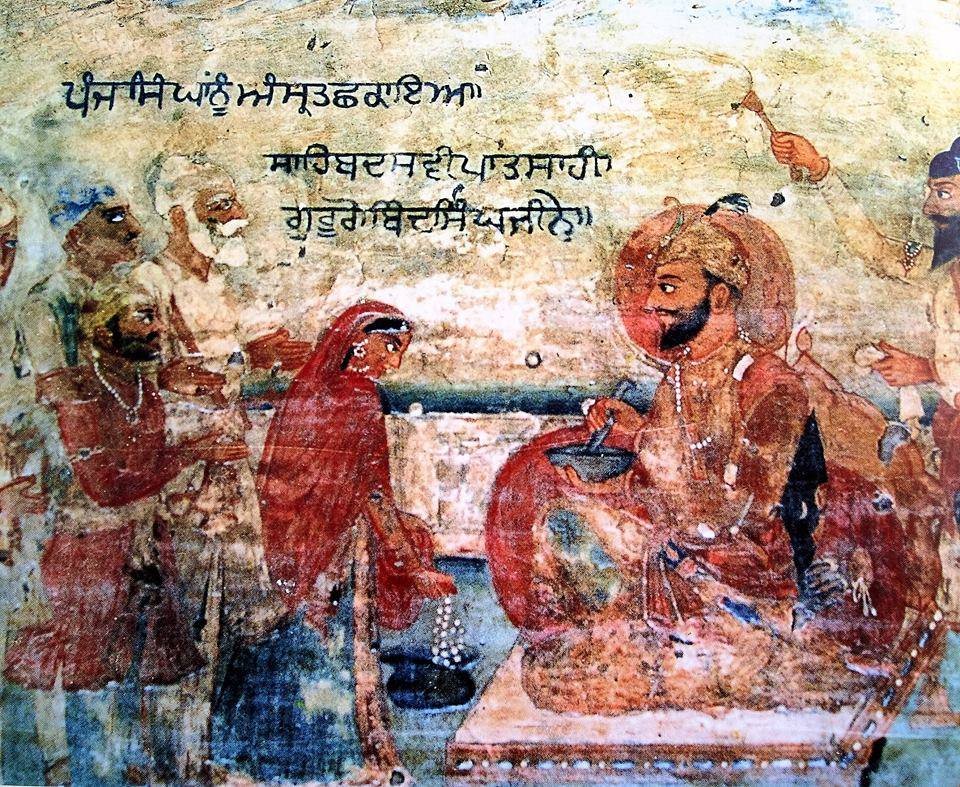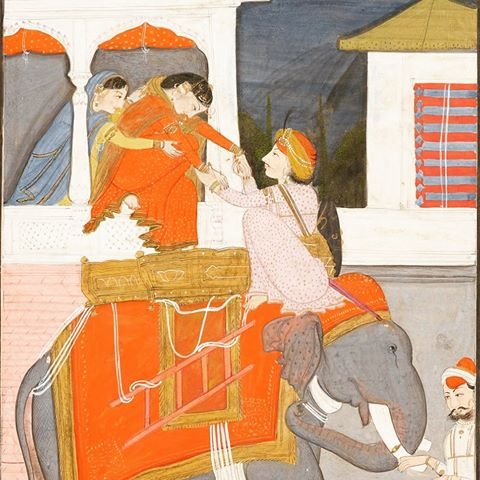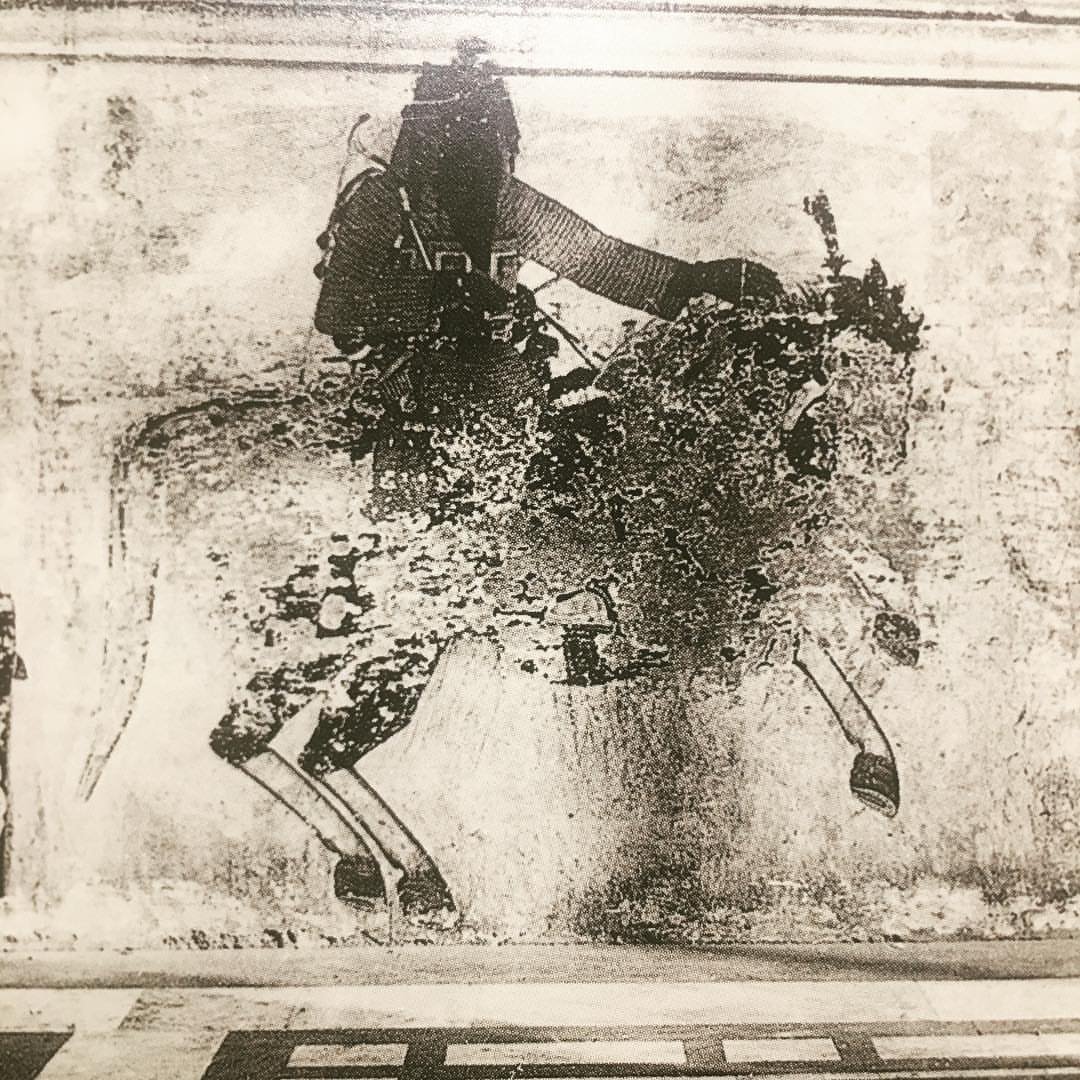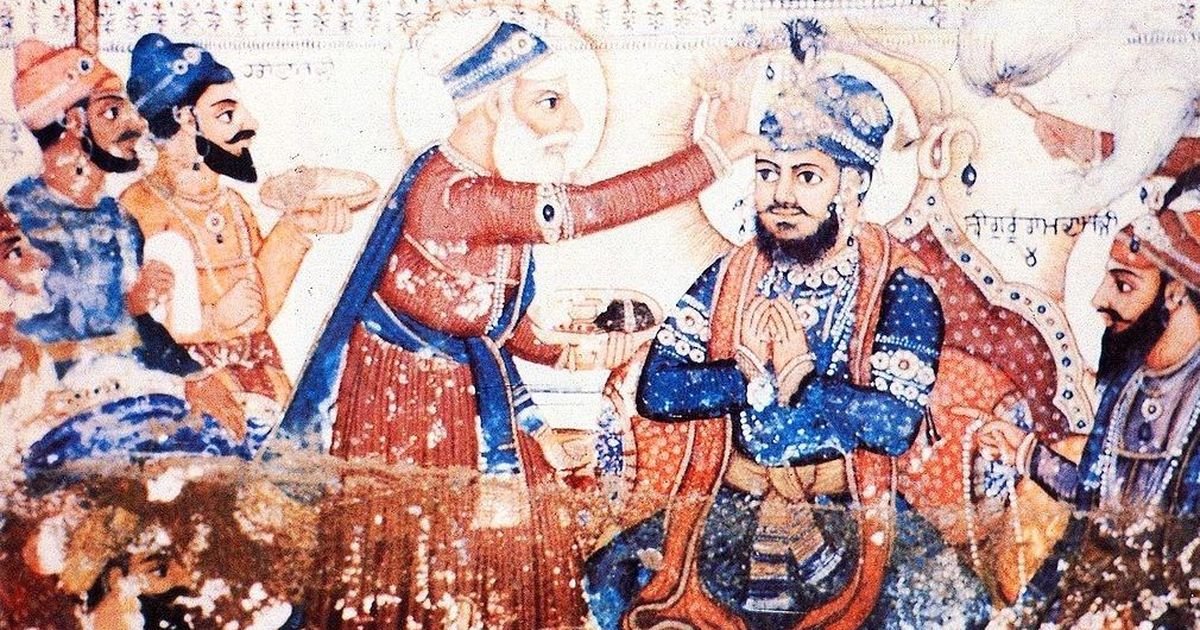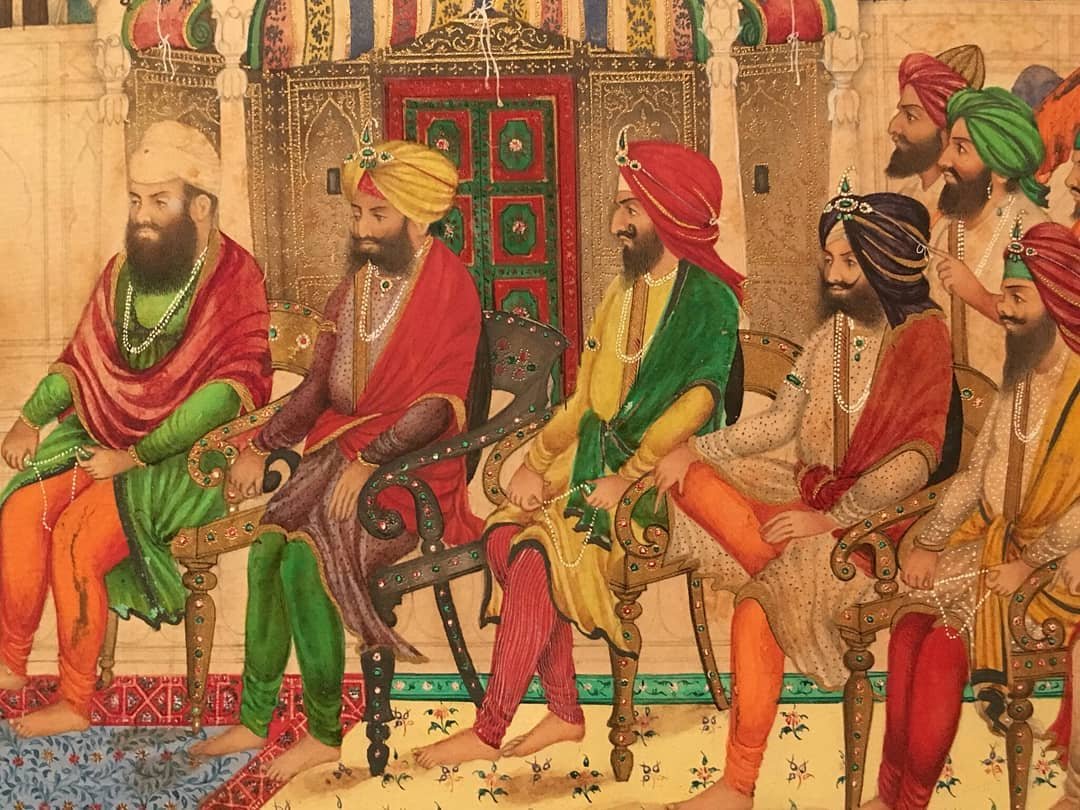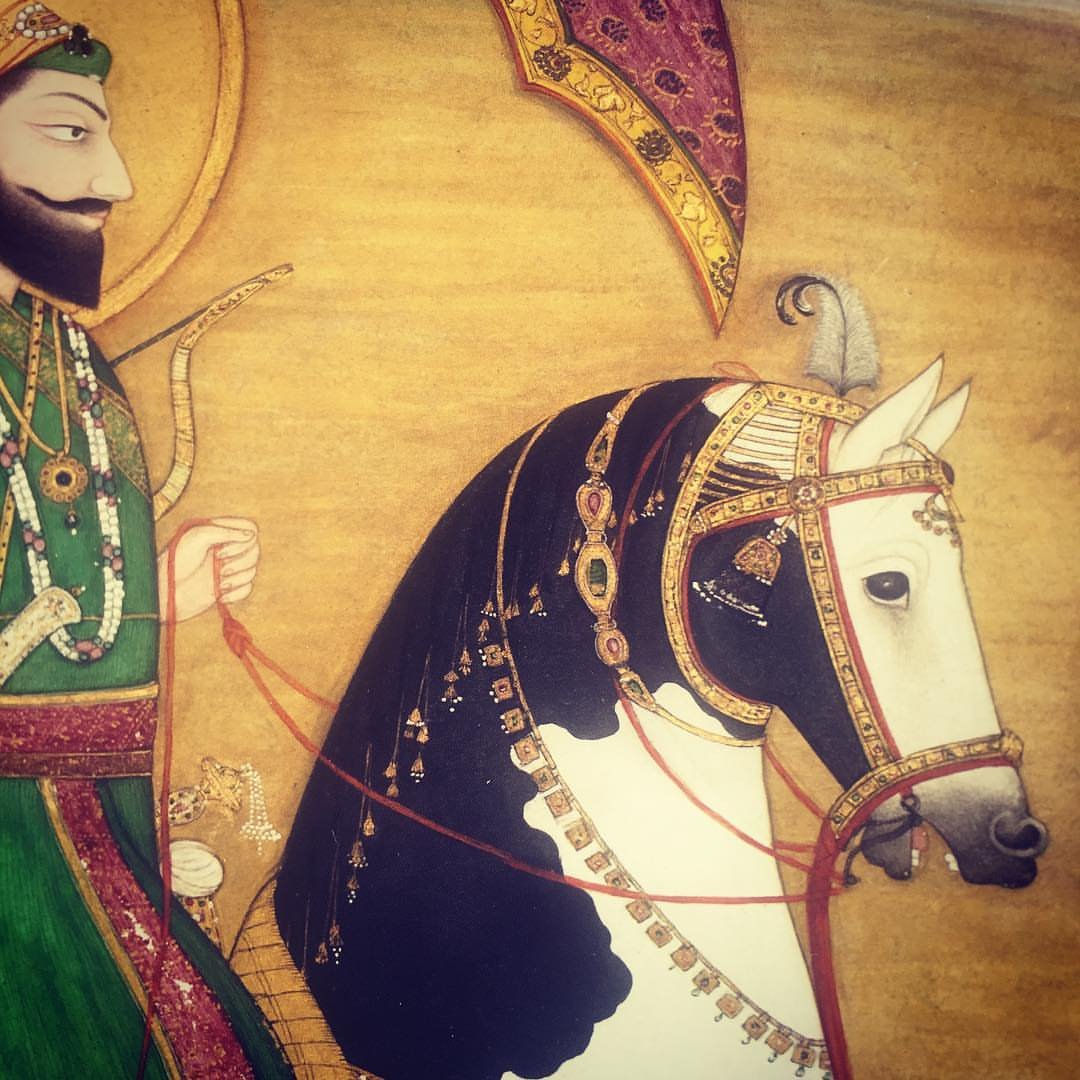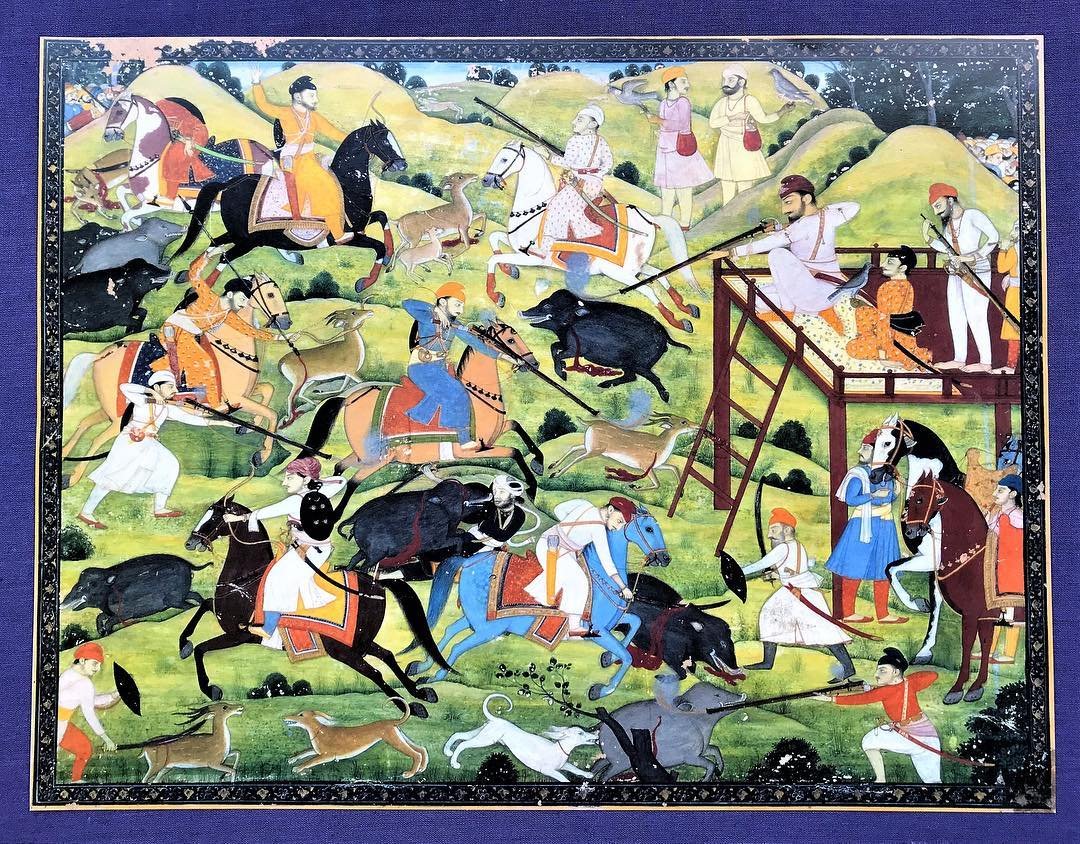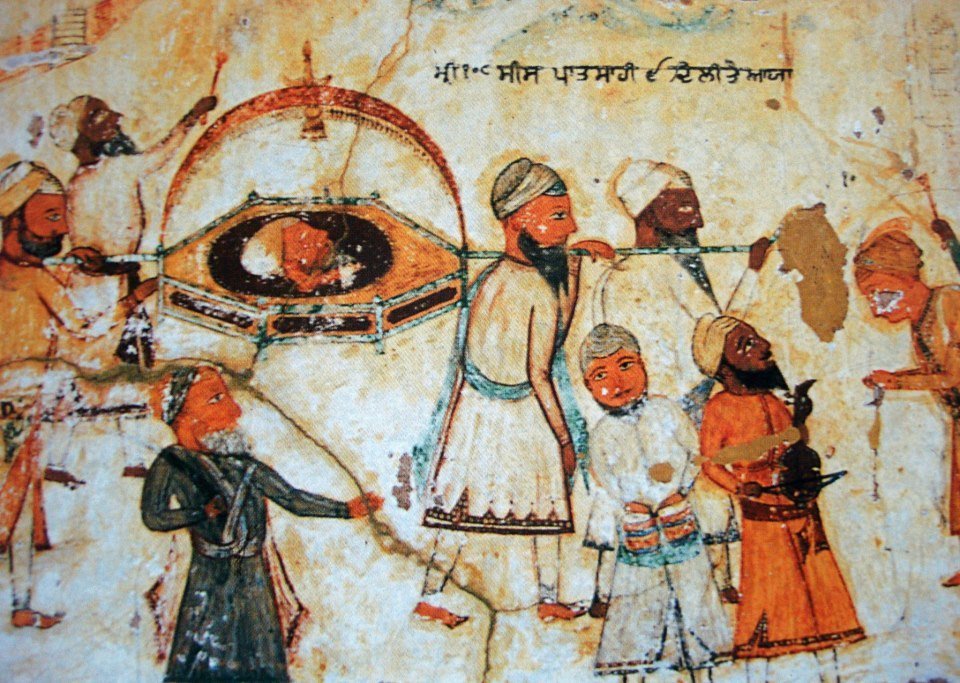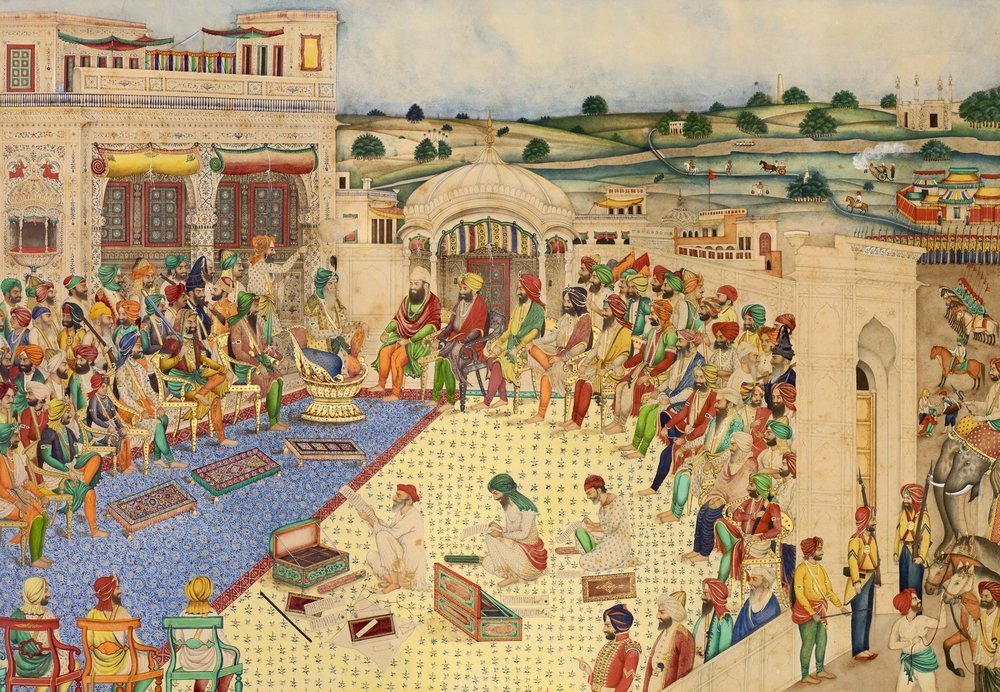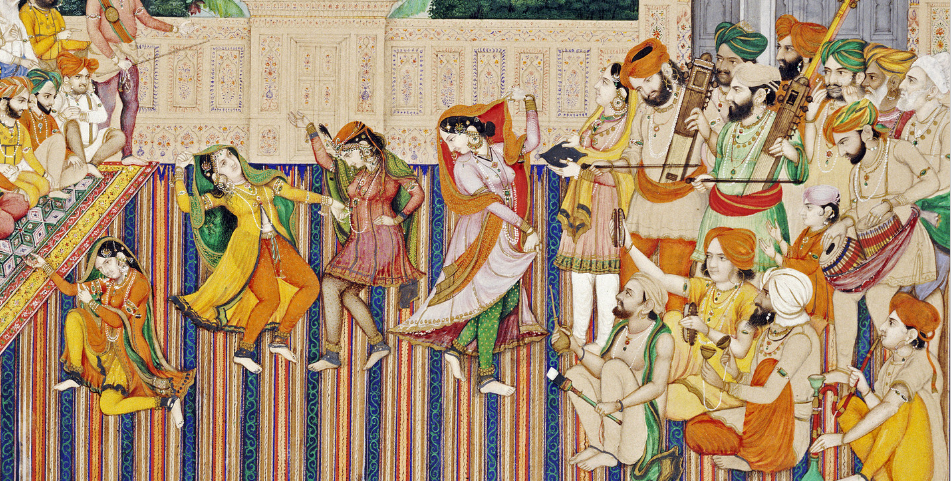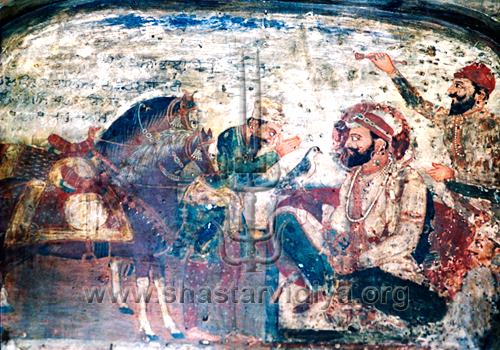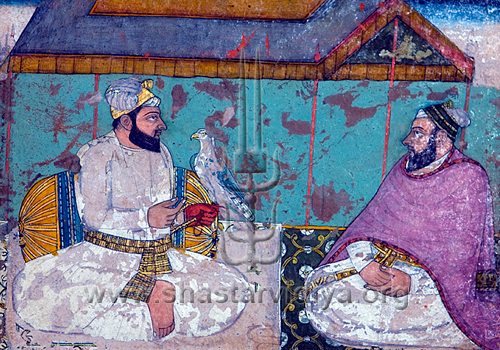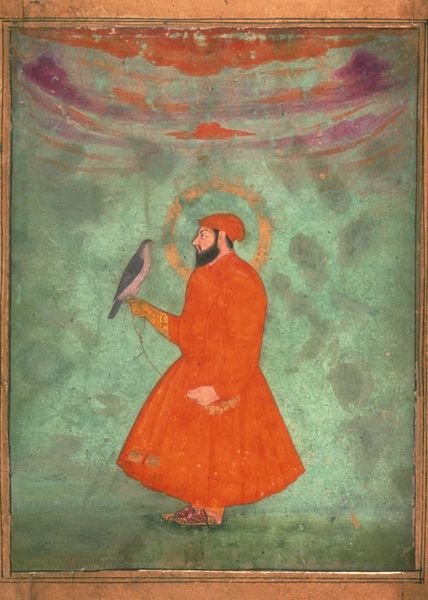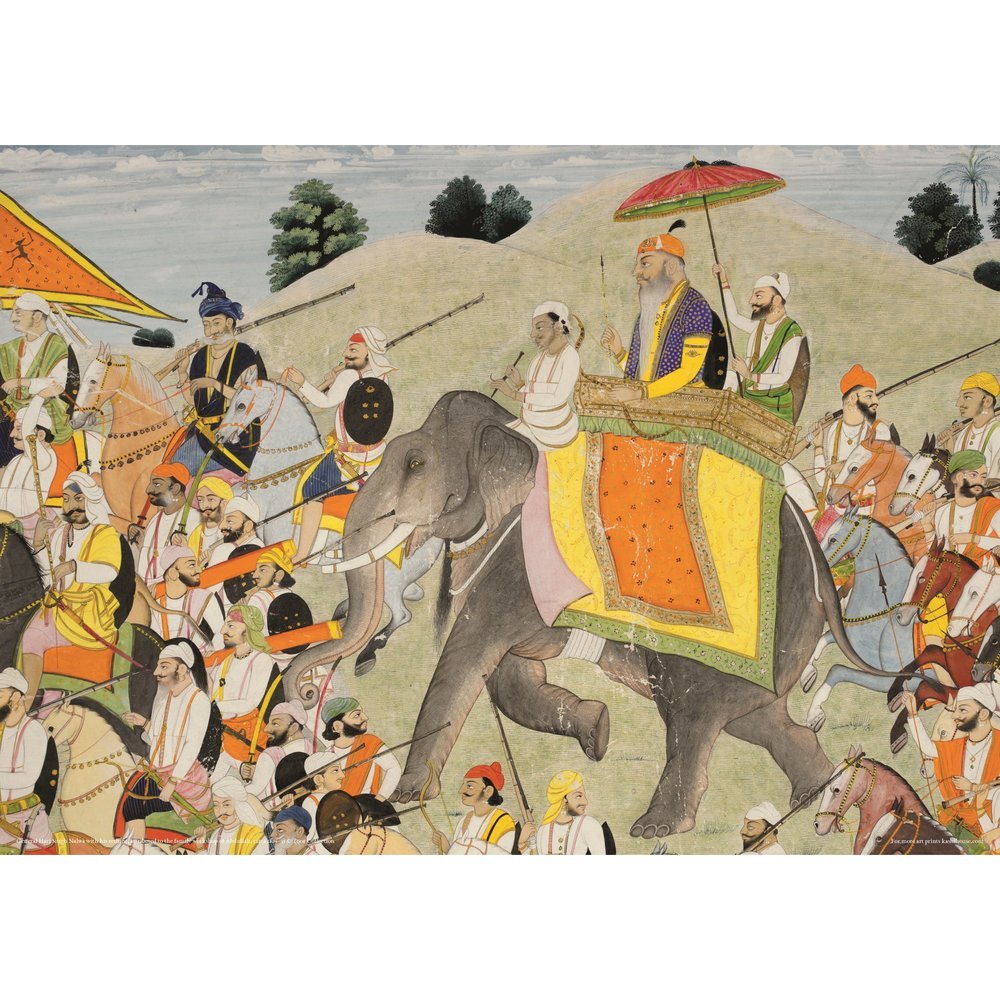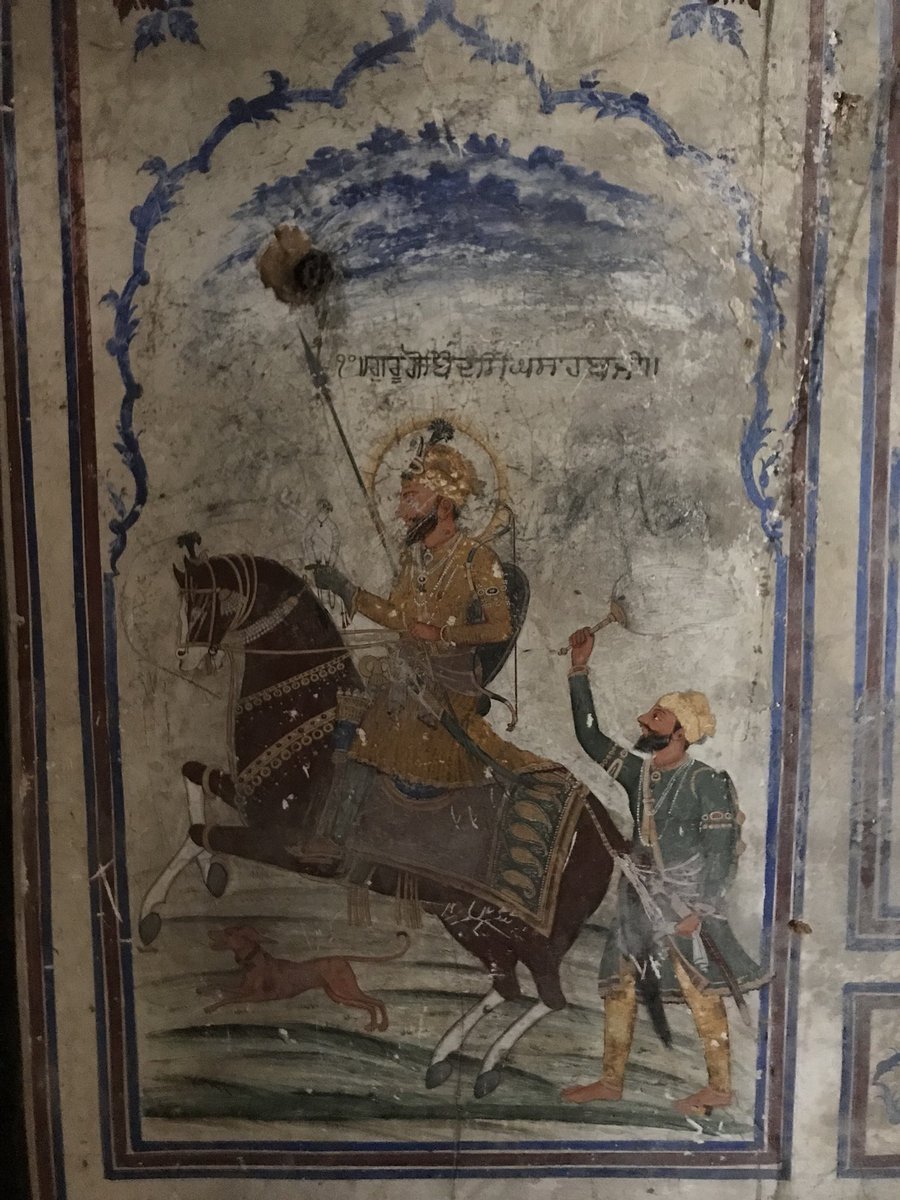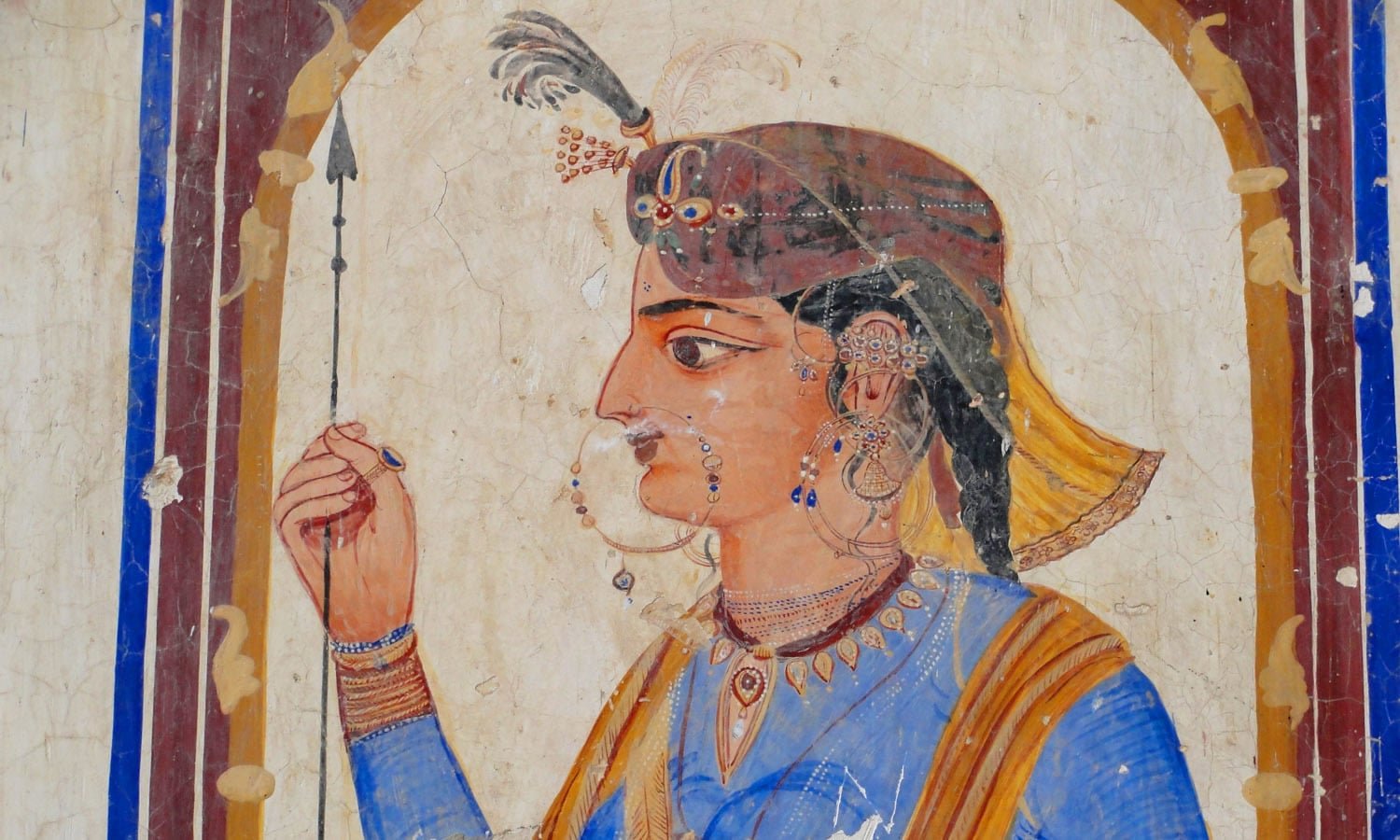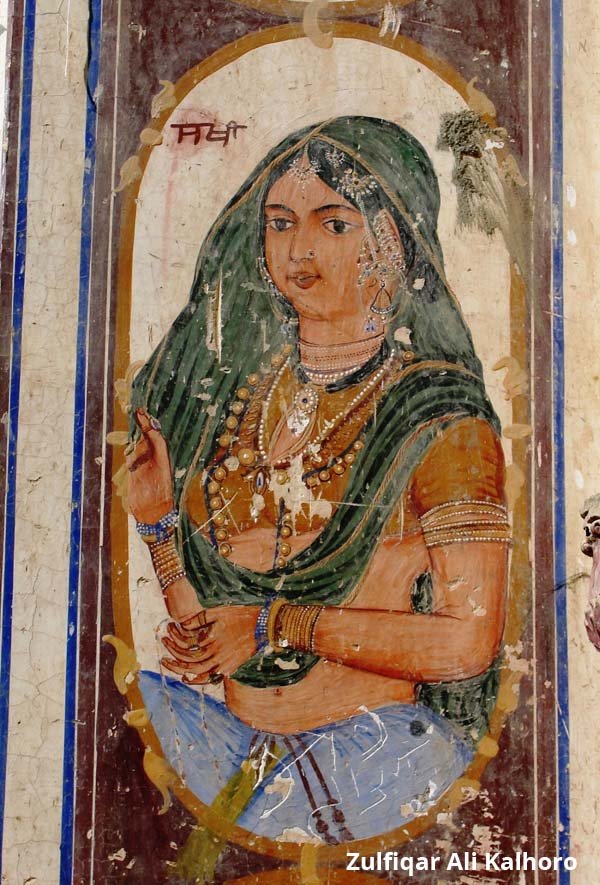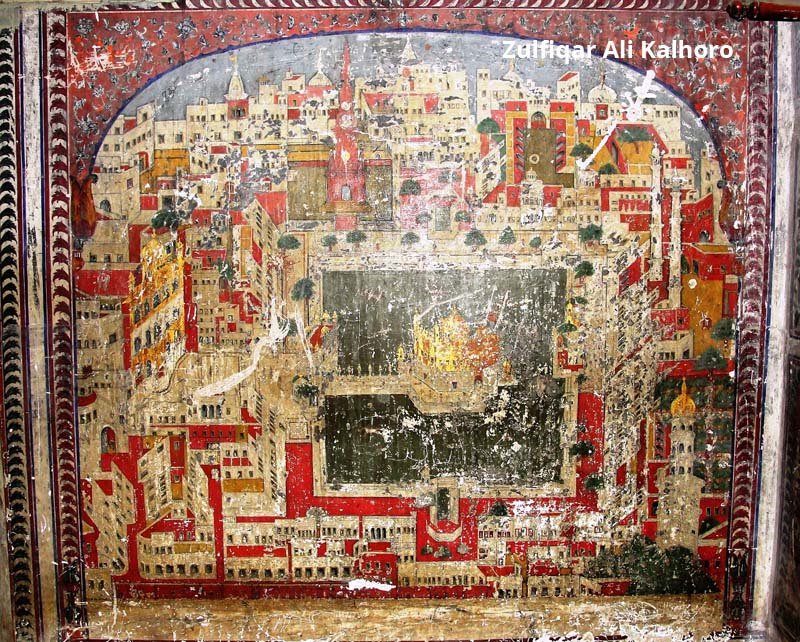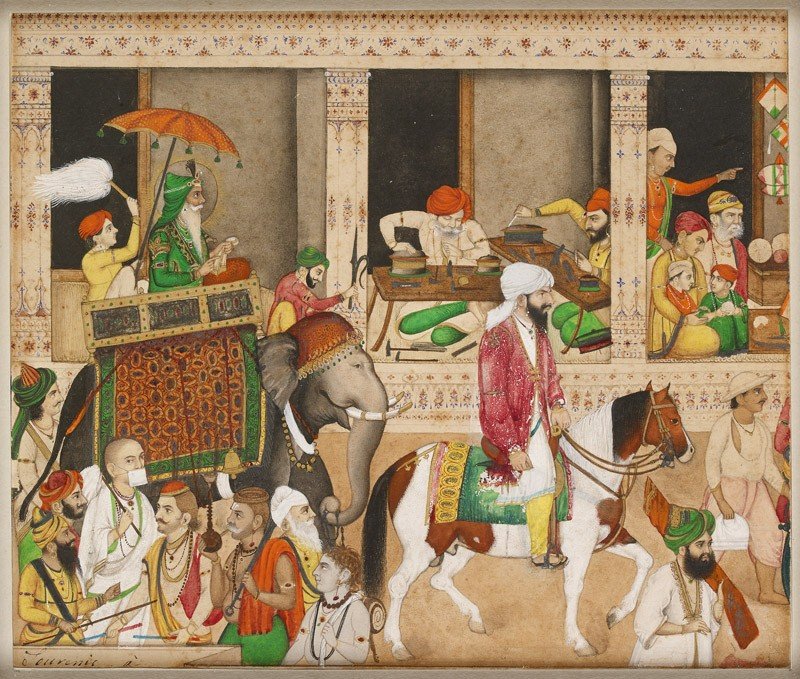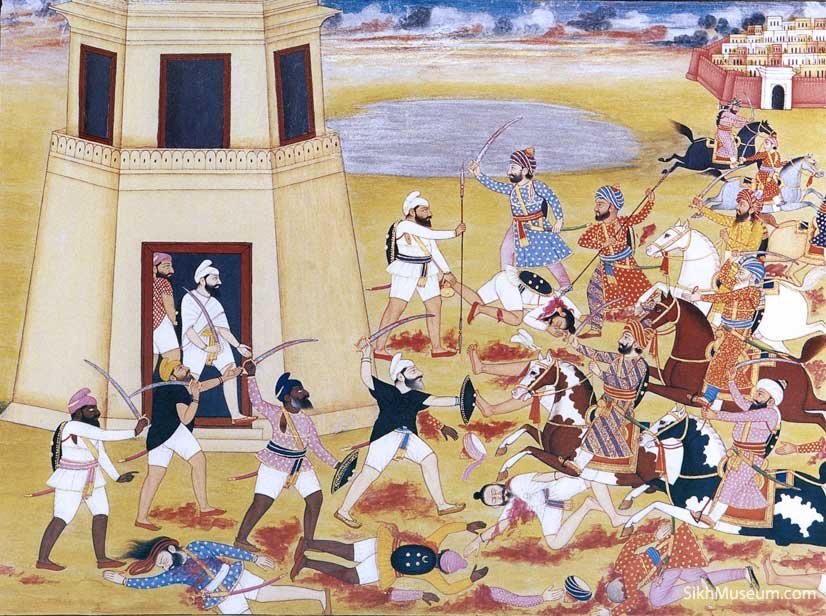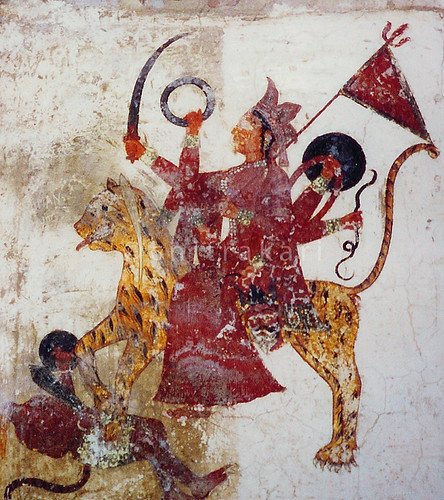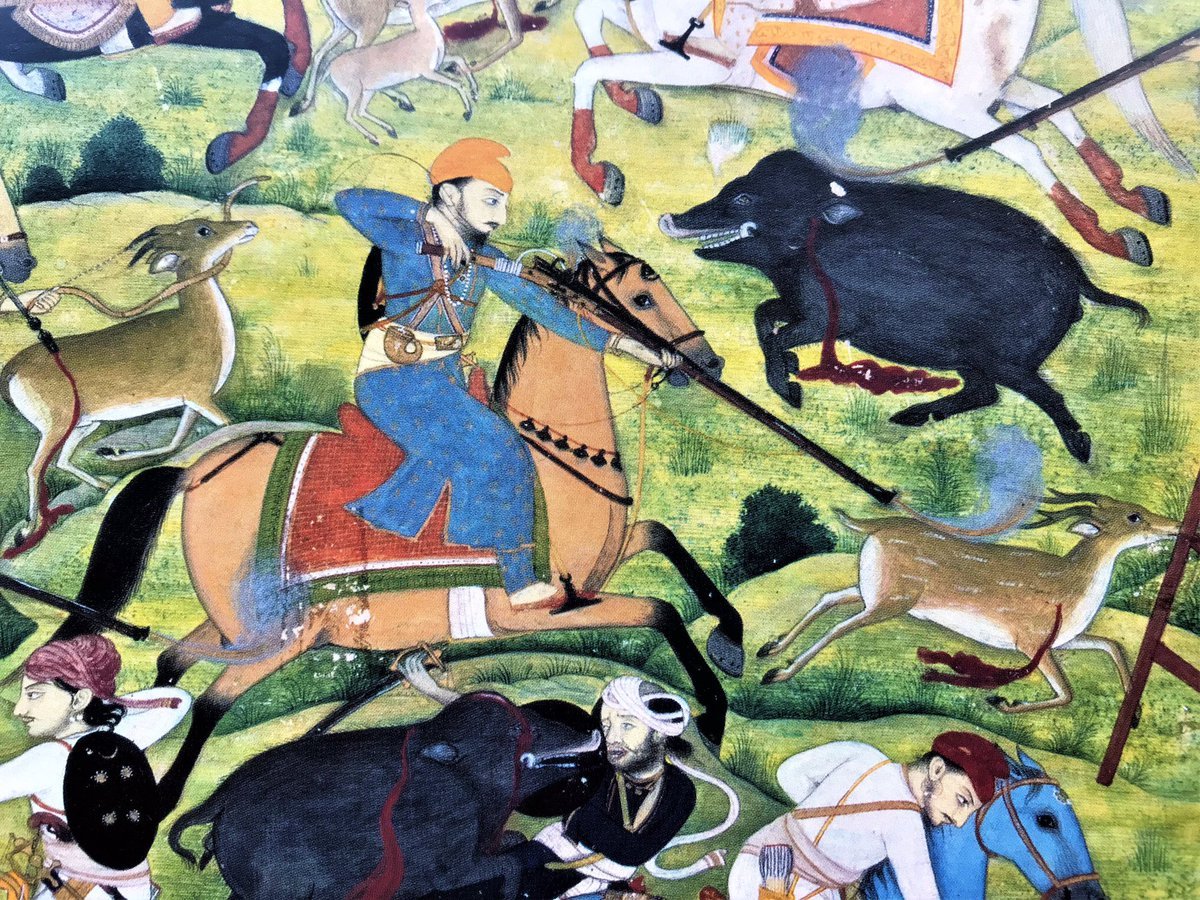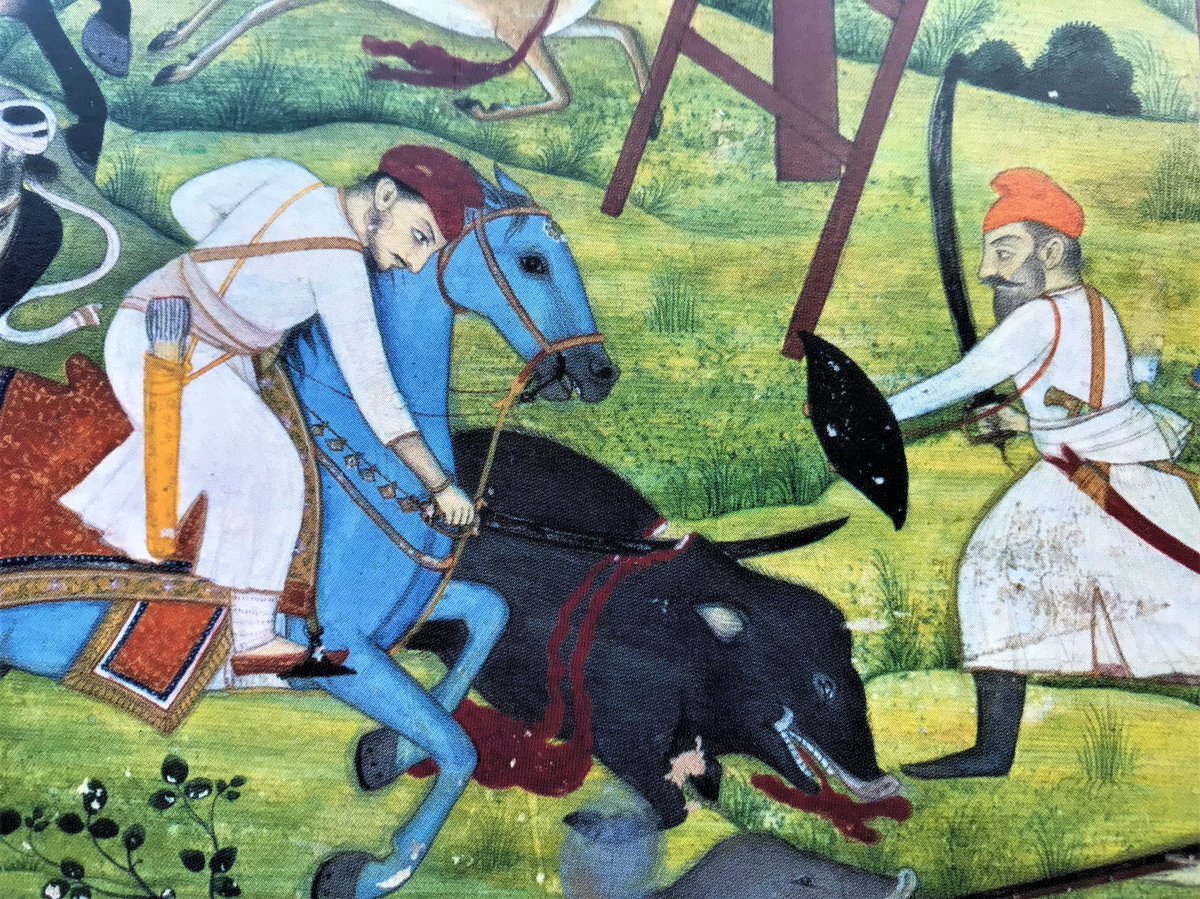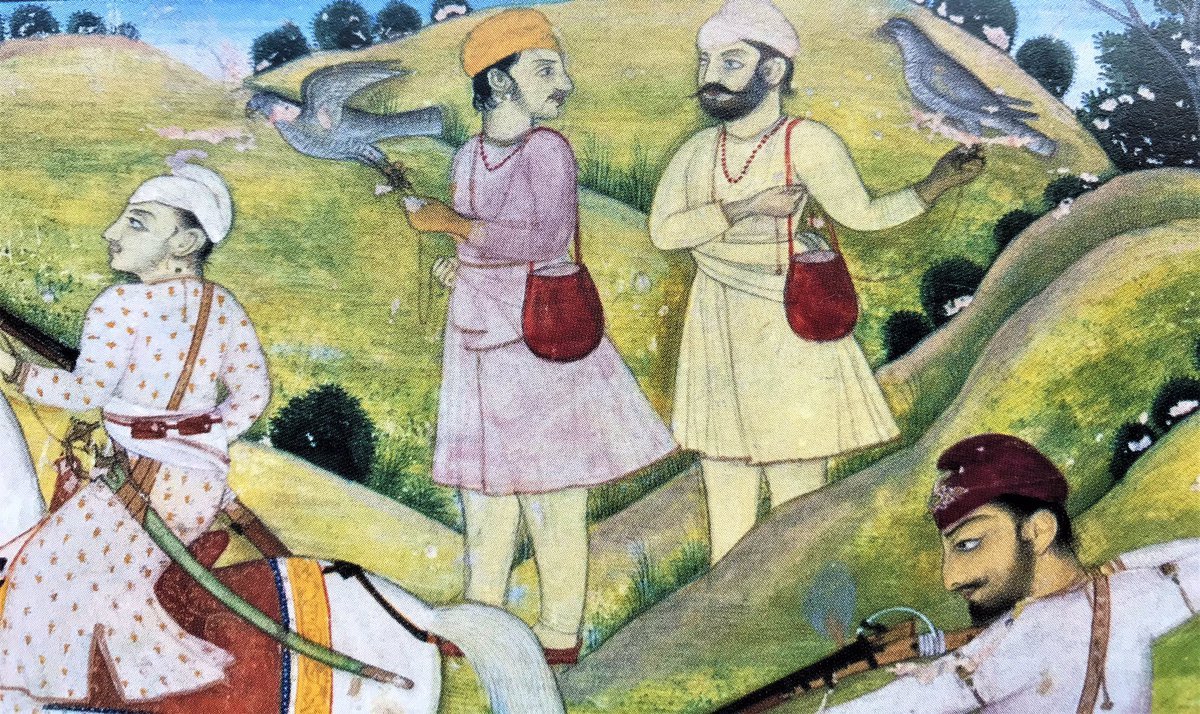-
Posts
7,401 -
Joined
-
Last visited
-
Days Won
255
Content Type
Profiles
Calendar
Forums
Everything posted by puzzled
-
After years of neglect, Pakistan plans restoration of Maharaja Ranjit Singh’s father’s samadhi After decades of unwillingness to protect the Sikh heritage, the Gujranwala district administration has planned restoration and preservation of Maha Singh’s tomb. Written by Divya Goyal | Ludhiana | Updated: January 16, 2020 3:47:05 pm In Gujranwala of Pakistan’s Punjab province, known for its pehelwans (wrestlers) and kebabs, lying tucked under decades of ignorance and neglect are the heritage treasures related to the roots of Maharaja Ranjit Singh and Hari Singh Nalwa, the commander-in-chief of Sikh Khalsa Fauj–the warrior king’s army. While Lahore, where he lived and has his samadh (tomb) went on to become synonymous to Sher-e-Punjab (Lion of Punjab), as he is known, it is Gujranwala where lies Ranjit Singh’s roots – his ancestral haveli (also his birthplace), his father Maha Singh’s tomb, Sherewalan Bagh Baradari and the ancestral haveli of Nalwa. After decades of unwillingness to protect the Sikh heritage, the Gujranwala district administration has planned restoration and preservation of Maha Singh’s tomb, located in the premises of Sherenwala Bagh but is now a crumbling structure with encroachments. “The Baradari still has beautiful intricate peacocks etc carved in its interiors. A madrasa functions from the ancestral haveli of Nalwa,” said Haider Khan, who traces his lineage to royal family of Bahadurgarh, now in Jhajjar of Haryana. (Express) Sohail Ashraf, deputy commissioner, Gujranwala has written to the Chief Secretary, Punjab asking for funds for site’s restoration and opening it for tourism. Maha Singh (alias Mahan Singh), the ruler of Sukherchakia misl in Punjab, was too a mighty Sikh warrior and credited for conquering the sprawling Rohtas Fort. Speaking to The Indian Express over phone, Haider Khan, assistant commissioner of Nowshera Virkan said, “We recently got all encroachments removed from the tomb of Maha Singh. Now a proposal has been sent for site’s restoration and conservation. The tomb was illegally occupied and some people had converted it into a godown for storing paint drums, chemicals etc which have been removed now.” The tomb of Maha Singh, father of Maharaja Ranjit Singh, in Gujranwala of Pakistan is in a deplorable state. The structure is now encroached from all sides. (Express photo) “Along with Maha Singh’s tomb, there is a beautiful Baradari (a structure having twelve gates) also from Ranjit Singh’s period and it was all a part of Sherenwalla Bagh. The Baradari still has beautiful intricate peacocks etc carved in its interiors. A madrasa functions from the ancestral haveli of Nalwa,” added Haider Khan, who traces his lineage to royal family of Bahadurgarh, now in Jhajjar of Haryana. A preliminary observation note prepared by DC Gujranwala and assistant commissioner Nowshera Vikran, reads: “The Sheranwala Bagh has a ‘Barra Darri’ (12 sides open structure) in the middle of the garden. The garden was linked to the Samadhi of Maha Singh, which has been illegally encroached upon by land grabbing mafia. A government school has also been built on the land of already deteriorating samadhi thus posing threat to the structure and to the pupils of the school. To add insult to the injury, some land grabbers have been using this place as a godown for stocking oil barrels and chemicals related to paints. Inside of samadhi there are beautiful paintings engraved on the walls. Due to misuse by the land grabbers, those have been damaged and now require restoration. The Deputy Commissioner Gujranwala stressed that all these sites have an immense potential for Religious Tourism / Sikh Religious/ Cultural Tourism and can yield a lot of revenue for government. Forgoing in view, it has been decided that all these structures may be taken up for immediate restoration / rehabilitation by Lahore Walled City Authority (LWCA) and a committee comprising member of LWCA, Evacuee Trust Property Board (ETBP), district administration may be notified for the said purpose and funds and expertise may also be requested from government of Punjab”. Roots of trees shooting from walls of tomb of Maha Singh. (Express photo) After the field visits of six heritage sites in Gujranwala, a fresh “Note for Information and Approval for Chief Secretary Punjab” was also written by the DC on December 21, 2019. “Smadhi Maha Singh Ji (father of Maharaja Ranjeet Singh Ji) – This structure was in deplorable condition. This beautiful massive structure has been encroached upon by a government girls’ school and many residential buildings. There was water well also situated next to the Smadhi, which was built by Maharaja, the well was used for watering the garden. Now the school administration has closed the well. The passage to Smadhi from Sheran Walla Bagh has been closed after the building of the school. Now the passage to Smadhi is from the main bazaar. The condition of the Smadhi was not good. The floor was filled with the paint chemicals, used oil boxes, empty cartons and oil drums etc. Paint was splashed on the walls. The roof is covered with trees, bush and shrubs etc and the roots of these have made their way into the ceiling and walls. The load of trees have caused the roof to bend downwards, it is feared that the roof of the varanda may cave in, if restoration work is not initiated in time. Upon seeing this situation, I have ordered immediate removal of all encroachers and materials from the premises of Smadhi Maha Singh,” a portion of the note reads. Damaged interiors of the tomb have been turned into a godown illegally. (Express photo) About the Baradari and Sheranwala Bagh, the note further adds, “The Sheran Walla Bagh was constructed and developed by Maharaja Ranjeet Singh. In the garden, there is a 12-darri (12-sided open structure) with painted walls of Sikh era and presence of peacock painting is on every wall. Unfortunately, the garden has shrunk to a few Kanals as illegal encroachments have been done by various quarters of the society. Over the years this place has become hub of drug addicts and gamblers. The “Akharas” i.e. wrestling arenas have disappeared due to encroachments”. The note concludes by urging the chief secretary to grant funds for restoration works of heritage sites. “If a small amount of budget is allocated for the preservation and rehabilitation of the historical structures, we can not only save our heritage but can also earn a lot of foreign exchange from Sikh community living abroad,” it reads. “We have got all encroachments removed from Maha Singh’s samadhi. Now, once chief secretary gives his approval and funds are allocated, restoration work will start,” said Haider Khan. The five other heritage sites in Gujranwala proposed for restoration include: Jain Mandir, Mandir Atma Ram ji (Samadhi Charat Singh), Sheran Wala Bagh, Haveli and birthplace of Maharaja Ranjit Singh and Mandir Bahampr-e-walla. For all the latest Pakistan News, download Indian Express App
-
healthy competition is fine but when you stop talking and get really violent over the joint khoo in the fields and the wall between the houses then that is a serious problem. its jealousy and greed. 2 men from my mum shreek were about to start a fight with hammers and other farming tools in the fields luckily my mums brother got there and stopped them. things get really serious there yh thaiya chachiya are the worse they want to hog everything for their own kids, they ruin the whole joint dynamic of the family. my thia and chacha fell out and built a wall between their houses, their wives then used to get their kids to argue as well. lol no joke but one day while my thaye was out, my chachi came around and destroyed my thayis chulla with a sledge hammer! my thayi then rang us and was crying on the phone and said that she had to ask the neighbors for roti! like what the hell were we supposed to do all the way from the uk!!! these women are so venomous towards each other
-
do you know about shareeka? people compete more with their shareeks than with anyone one else, it is so deep routed and obsessive! people will put themselves in debt just to compete with their shreeka! it plays such a huge part in society there and is so deep routed, i really cant get my head around it! i understand it, but the obsession that they have i really dont understand that! it part of the fabric of society. but this competing with your shareeks isnt a new thing it goes decades back probably over a 100 years back
-
its both imo. There are people there with just 2 or 3 fields and 2 animals and they really do struggle, and then there are some people with so many fields that they give them to other people to plant and plough for them and give some % of £ for doing their fields for them. The rich and poor live soo close in india. people committing suicide is also due to not being able to pay debts, they pick loans, fields dont give results so they decide to commit suicide. another thing is that people spend money on stupid things, things that they can't afford mainly because of trying to compete with their neighbors and relatives. The lady that i wrote about whose son has depression, they built a medium sized koti and 10s yrs on they can't even afford to paint it! the whole thing is just cement. the reason they built it is because their relatives next door are well off. on the other hand my mums cousin who does kethi is doing so well that he's even got fields and people working for him even in other pinds. the rich and poor divide is getting wider and wider even in rural india same thing goes for other communities like ravidasias, in my nanke pind behind our house is a chamar house who built a medium sized koti about 15 yr ago and to this day they still haven't finished it off because they can't afford it! also they havent painted the parts that are finished. one of their sons got married and the room that the new bride was gnna be sleeping in they painted the outside of that room bright pink! so the whole house is cement grey with a pink box in the middle! some of our chamar neighbors are really poor with small houses so they have their weddings in our house and they also have their food for their wedding events prepared in our house, which is gd because neighbors should look out for each other, yet they have massive reception parties in air conditioned venues! once again spending money on stupid things. iv seen a lot of stupidity there the lack of compassion and family politics really takes you back as well. this one old lady in my dads pind who was from my dads pind, got married off but came back because her husband died yrs ago, shes from the same lane as our house and has the same family name as us, we saw her walking around the pind barefoot with dirty clothes, she lives in a shed in her brothers house! who himself lives in a 4 story koti. one of her brothers a amritdhari from UK was visiting the pind and came to visit us, he was boasting about his sons and grandsons all been uni and are lawyers and accountants bla bla bla, yet his own widowed sister is living in a shed in their house! we were just speechless. family politics plays a big part in all this too. the whole thing is a mess its greed, poverty, family everything ...
-
Yup! Fornicator, adulterer, murderer, tyrant, and head of the church! Not too different to when prince Charles is gonna become king and head of church! Popes who are heads of the catholic church were no different! Murderers, tyrants, carried out massacres, inquisitions, Some popes even used to hold orgies in the vatican because they felt their sins would be forgiven because they were "chosen" some popes even slept with their sisters. Popes have one of the darkest and most evil history. Catholic church is responsible for the death of millions of people. It's one of the reasons why our gurus didnt give authority to any king or priest.
-
Yh these documentaries are really eye opening!
-
Yogi bajhan, osho rajneesi etc they were all the same. I watched this documentary about osho on netflix called wild country and the neighbours said that all you could hear day and night was 100s of people having sex. Really gd documentary shows you how these indian yogi gurus made a market for themselves in the west picked their target audience offered then some weed, sex and yoga and brainwashed the people into worshiping them he was like their god . Another gd doc on Netflix is bikram yogi,guru,predator .
-
What benefits does hemp oil have? All I use is coconut oil and sometimes add lavender oil to it Iv got rosemary oil too but never used it.
-
Well in punjabi I dont even think there is a word for "depression" the actual diagnoses doesnt even exist in our culture so where are you supposed to start from? A few yrs back when I went india with my dad he took me around and old family friends house, the ladies son was in his 30s and was married with children, he clearly had depression but they had absolutely no idea! The lady was telling my dad how her son just sits there with his head hanging down all day and ends up in deep thoughts, she said he wonders off into the fields for hours wondering around, he doesnt interact with his kids and anymore and doesnt talk much anymore. The son then started telling us how he is always worried and doesnt feel like doing anything. He said hes doesnt feel happy inside the house or outside the house. He clearly had depression and the mum started saying that someone's done black magic and that she gonna take him to a baba. People dont even know what depression is. also as a man who wants to admit that he has problems? No one
-
Well yh evangelicals are protestants but not all protestants are evangelicals because protestant is an umbrella term for the many reform movements that separated themselves from the catholic church including the church of England. Protestant comes from the word protest. The movements started of as protests against the pope and all that catholic stuff. King henry the 8th saw these protests and reformers as a ticket to break off from catholic church and get a divorce and make himself head of the english church
-
PUNJABI MEN ARE STRUGGLING WITH MENTAL HEALTH BECAUSE THEY LACK THE WORDS TO DESCRIBE IT ‘I know that if I tell them that I’m going to therapy or that I take antidepressants, they’ll see it as me having a serious sickness.’ Sukhi, a 28-year-old graduate student from Birmingham, England, was officially diagnosed with depression last year. He was forced to see a doctor after he started to lack the emotional energy necessary to do basic things: get out of bed, make food, hold a basic conversation with his flatmates, and most of all, take his final year exams for his master’s degree in economics. For years, Sukhi had dealt with smaller bouts of depression. He had days where, he tells me, he felt a “heavy, overbearing sadness” without any root cause. Other days, he found himself sitting in the university library for hours, unable to work and “trying my best not to burst into tears.” At its most intense, he admits he had suicidal ideations: “I felt so worthless and like I wasn’t good enough for my friends or my family.” He says he usually could “pull himself together” by the end of the day, amounting his feelings to the stress of university life. It was only when he was physically unable to finish writing his final year essays that he decided he needed to get help. Sukhi agreed to speak to me under one condition: That I keep him anonymous. That isn’t because he’s ashamed of having a mental illness. After all, more than 16 million people — one in four Brits — will suffer some form of mental illness according to official National Health Service (NHS) statistics. But while Sukhi talks openly about his mental health with his friends and colleagues, he still hasn’t told any of his tight-knit Punjabi Sikh family. “There’s still a lot of shame around mental health in my community, which is similar in a lot of South Asian communities,” he tells me. “I know that if I tell them that I’m going to therapy or that I take antidepressants, they’ll see it as me having a serious sickness. I’m not ashamed of mental illness, but I do worry that my parents will feel shame — like they’ve failed as parents. And inevitably, they’ll wonder how they’d tell other people in the community. Or how they’d even explain what a mental illness is.” It is true that this is a common state of affairs in many Punjabi families, which view emotional vulnerability among men as a sign of weakness and failure. As a result, it’s led to a situation where, per Sukhi, “hundreds, potentially thousands, of Punjabis have been forced to get on with their lives, in spite of their mental-health struggles.” “I know that my grandfather, who came to the U.K. in the 1950s, dealt with his own mental-health struggles,” Sukhi confides. “My mum saw him crying on his own in the car once, when she was a teenager — apparently, this happened quite often. But when my mum brought it up one day, he got angry, denied it and started shouting at her. She didn’t bring it up again until after he passed away.” “When you’re an immigrant and you have to look after your family,” he continues, “there’s a pressure to suppress your emotions because your family is more important, and putting food on the table is the most important thing. It’s not just cultural taboos around mental health — I don’t actually think that’s the main reason. It has more to do with men feeling they need to be the head of the household, and it’s their responsibility to keep everyone together. That’s what encourages them not to say anything.” Recent research from the University of East London has shown that South Asians were among the ethnic groups least likely to consult professional mental-health services, largely because they had fewer access to resources and the few that they did weren’t culturally contextual. The research also showed that Punjabi Sikhs were among the most vulnerable to suffer mental illness in silence, because of a “belief in self-sufficiency” and a “belief that they are capable of managing hardships without the input of external services.” To begin to change those beliefs, at the end of last year, Shuranjeet Takhar, a postgraduate student at Oxford University started Tarakī, an organization that aims to provide Punjabi men an “open space to talk about their mental health.” He did so because when he went to look for help with his own anxiety within the Punjabi community, he discovered that “there wasn’t much knowledge about mental health and that often, it’s dismissed as a problem that only affects white people.” While Takhar tells me that there’s been significant progress made in Punjabi communities — especially around women’s mental health — men still “find it difficult to talk about how they feel, and believe that you should just get on with it.” Thus, one of Tarakī’s central missions is to “provide better education in Sikh communities around what mental health is, and to make clear that mental health is as important as physical health, which is taken more seriously.” Since its inception, Tarakī has set up a successful Instagram page that profiles Punjabi men speaking openly about their mental health. They include people like Jaspreet, who recalls being told that his depression-fueled sleepless nights might be the product of “black magic.” The page also features mental-health professionals in the Punjabi community and contact details for private consultations. “Social media outreach is just one way to reach the community,” says Takhar. He tells me that the organization is already running mental-health workshops in gurdwaras and within British Sikh communities, led by people in the community itself. “One of the biggest challenges,” he says, “is language. There isn’t a direct translation for words like depression and anxiety in Punjabi, Hindi or Urdu, which means that a generation that came to the U.K. as migrants aren’t able to understand what it is, or know the severity of leaving it untreated.” “We need culturally attune services that understand the cultural context of illness and the histories of migration that dismissed the mental health of our parents and grandparents,” Takhar adds. “Homogenizing [mental-health] experiences doesn’t work, it only brings us to where we’re at. We want to make sure that people who want to help their own communities have the knowledge to do so. Ultimately, mental health should be a community-based approach.” Sukhi does plan to tell his family about his mental-health struggles soon, and he believes that organizations like Tarakī are needed to help make a cultural change. “Younger Sikhs, in fact, are much more conscious of mental health, and it’s definitely helped that celebrities and sports people are talking about it,” he says. “But changing the views of our communities is much harder. Maybe, they think by keeping quiet, they’re protecting us. I don’t know. I just hope my kids won’t feel they have to keep their struggles a secret, too.”
-
This quote probably was the most used quote on social media last year and the year before, mainly by females (its true) and its not even guru nanak dev jis words.
-
but it aint easy as that, alcohol for many is a get away or used for coping. look at how many punjabi men sit alone in the living room with a bottle in front of them, that isnt normal behavior. iv seen many depressed men in my family and they use alcohol. depression and mental health is a big thing among south asian men and black men in the uk, this alcohol thing is a lot more deeper than people think its not gnna be that simple resolving it
-
i drink cbd tea from holland and baretts lo i like the tastel, a girl with depression told me that the cbd tablets help her
-
sonam bajwa
-
not sure if that is against sikhi or not. reading bani to get rid of ghosts nothing wrong with that iv been to baba vadhbhag singhs dera sahib gurdwara and there is a lot of exorcisms there and i saw some weird sh1t happening! didnt see any bani being read ...
-
they need to recruit a media team with a modern approach to things, but they too stupid to do that. i also think if they make a team of archaeologists they will find some really cool things in amritsar like secret under ground tunnels from the time of the sikh raj you can create a fine balance between tradition and modernity both are important so much potential in amritsar like they reopened qila gobindgarh in amritsar which goes back to the time of the sikh misls and was later developed and further fortified by maharaja ranjit singh, they reopened the fort and decided to open punjabi dhabas and camel rides inside it what the fvck!!! why would you have dhabas and camel rides inside a fort used in battle! how more out of character can they make it but like you said they too stupid to do that
-
evangelicals are protestants. its basically the same thing church of england is protestant too
-
true organized religion tells you this is how it is and this is how you do it, dharmic faiths let you grow and let you experience it for yourself. abrahamic faiths dont let you grow because they tell you "all the answers" they think they know it all and are very arrogant. thats why you see muslims and christians boasting and looking stupid. the nature of abrahamic and dharmic faiths is completely different.
-
It ain't just a rural thing it's a indian thing even dinner ladies working for government schools dont get payed sometimes, even the indian army dont get payed at times.
-
Vatican has social media like a official IG, youtube channel, Twitter which shows you the pope interacting with people and day to day life in Vatican. It keeps Catholics around the word tuned in. It's like harmandir sahib having a official youtube channel showing the daily routine and sangat experiences, "back stage" stuff etc I dont think it's a bad idea tbh it's one way of drawing people in social media plays a big part in modern day religion. People wanna see things and know stuff people wanna be involved in religion in more than one way
-
They didnt pay them the wages that's why they killed them I think. Many freshy "managers" and "bosses" do that with their workers they dont pay them. On the tv they were saying they used hammers.
-
not surprised these pastors are like the dera babas
-
19th century Sikh soldier from Lahore 19 century mural from original akal takht 1825 Punjab plains 1840 not sure if they are Sikhs but it was done in Punjab during the Sikh empire 1850 Punjab plains Photo 1902 of wall painting at Harmandir sahib parkaram fresco at original akal takht hunting 1820 rare painting depicting Guru Tegh Bahadur jis head being carried baba bir singh naurangabad Hazur Sahib Maharaja Ranjit Singhs court. looks so majestic ... dancers at maharaja ranjit singhs court, great detail in the painting! Guru Gobind Singh ji 1800 pahari Guru Gobind Singh ji painting at a mandir in jammu Guru Hargobind Sahib ji and Baba Bidhi chand at original akal takht guru hargobind sahib ji and bhai rupa guru tegh bahadur ji Hari singh nalwa, looks so grand .... harmandir sahib 1820 jassa singh ramgharia (with his sons?) 1780 this is one of the oldest sikh paintings iv seen its done during the sikh misl period really interesting. not much is known about the art and culture of that time. sikhs 1780 wazir singh nikkai 1780 painting from khem singh bedi haveli in pakistan frescoes of women and khem singh haveli frescoe of harmandir sahib and khem singh haveli maharaja ranjit singh on elephant in lahore. a lot of detail you can see a jain monk at the bottom with his mouth covered and some sadhus? maharani jind kaur sikh afghan war Sikh couple painting of durga at Gurudwara at Nurungabad c.1720 AD.
-
in the old days sikhs used to be very harsh towards ex sikhs, the christian convert sadhu sundar singh used to have sikhs throwing stones at his houses, not saying that we should do that but our attitudes have changed a lot, changed so much that sikhs have become way too tolerant. i dont know how long this change towards liberalism is gnna continue but it needs to stop in the old days when the british used to convert sikhs to Christianity in punjab, sikh preachers used to go out there and convert the same amount of christians to sikhi! iv read about it this happened a lot in the late 19th century and early 20th century. there was a case where sikh parcharks converted a lot of christians from haryana to sikhi in response to the british converting poor sikhs to Christianity in amritsar. now sikhs have become to flipsy floppsy




